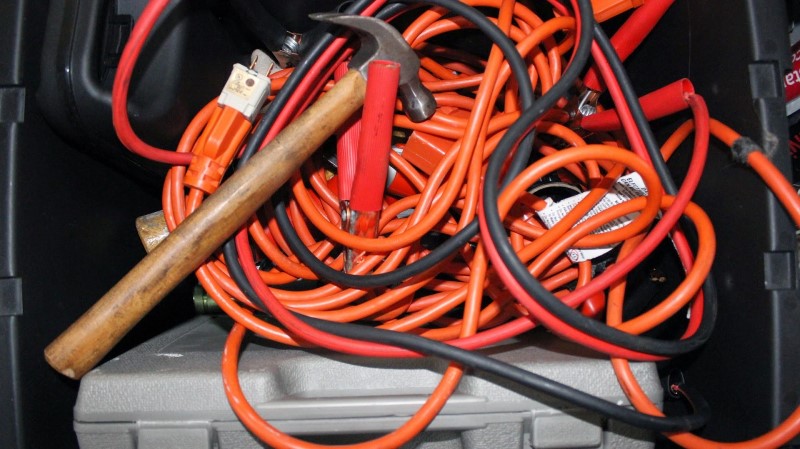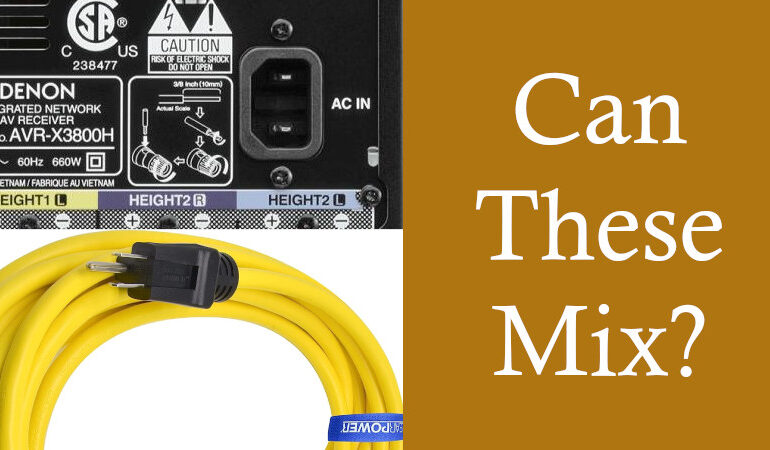Extending Your AV Receiver’s Power Cord Safely
Setting up a home theater system can be very complicated. There is furniture, speakers, electronics, TVs…the list goes on. Some you want wall-mounted, some you want on stands, and some need to be housed out of sight. There are a lot of moving parts. But you made a plan and you are mostly happy with how it has come together. Except for one thing. The wall outlet is a little farther away than you anticipated. Most of the stuff reaches but not your AV receiver. And that AV receiver? It pulls the most power! Can you even use an extension cord with it? How are you going to extend your AV receiver’s power cord safely? Let’s discuss!
Safety Should Always Be Paramount
You are excited about having a home theater (or just a better sound system), but not at the expense of the safety of your family and yourself. You’ve heard over and over that you shouldn’t plug high-draw devices into power cords. Normally, this comes up during the winter when people are using space heaters. But one of the biggest numbers on the side of your AV receiver box is the number of watts it has. Surely that puts it in the same category?
Well, not really.
Continuous vs Instantaneous Watts
A space heater is a completely different animal from an AV receiver. While an AV receiver has a wattage rating, that rating is how much instantaneous power it can provide. A space heater that is rated at (for example) 1500 watts is pulling that much power from the wall continuously. An AV receiver that is rated for 150 watts into 10 channels (again, for example) can’t really put out that much power (1500 watts) for more than a fraction of a second.
With a continuous power draw, the power cord needs to be able to pass that much power constantly. This means a power cord with a thicker gauge wire that is rated for that amount of power. The power cord that comes with your space heater (or AV receiver) has been deemed safe to handle the maximum power draw for that device. If you want to extend the length of your power cord for your AV receiver or space heater safely, that extension cord needs to be of the same quality.

Can You Use an Extension Cord?
The reason why people are often warned against using an extension cord with a space heater is that they often use an incompatible cord. High-current extension cords exist. They are more expensive (this 25′ cord from Amazon costs $30 for example) and people don’t often have them around. If they do, they are used outside with their power tools (where they are usually needed). Their indoor extension cords can’t handle the draw of a space heater. The continuous power will cause the extension cord to overheat and potentially catch on fire.
AV receivers pull far less power from the wall continuously. Generally, you aren’t going to see more than 200 watts pulled from the wall continuously, and often much less. AV receivers have capacitors that you can think of as little batteries inside. They are used to put out a lot of power very quickly for those high-volume moments of your movies. Unlike space heaters, AV receivers don’t pull a lot of power from the wall continuously. This means you can more safely use an extension cord to extend the length of your AV receiver’s power cord.
What You Should Do
If you look at the plug on the back of your AV receiver, you will notice that it looks suspiciously similar to the one on the back of your computer. This isn’t an accident. If you want to extend the power cord of your AV receiver, you can (and should) just buy a computer power cord of the correct length. Your AV receiver is probably a two-connector cable but a three-connector cable will work just fine. We’d recommend sticking with a 16 AWG (gauge) cable though 18 AWG would be fine as well. When in doubt, check the specs on the power cord (might be listed on the manufacturer’s website or on the cable itself) and buy the same or better (a lower AWG rating is thicker so a 16 AWG is “better” than 18 AWG).
If you are wanting to use an extension cord, pick up one of these that are designed specifically for computer power cables. Again, make sure that the cables fit and are of the same gauge (the one we linked is 16 AWG). Of course, if you have a high-current extension cord, you can use that as well. They’ll probably be far too long and an obnoxious color, but they’ll work just fine.


